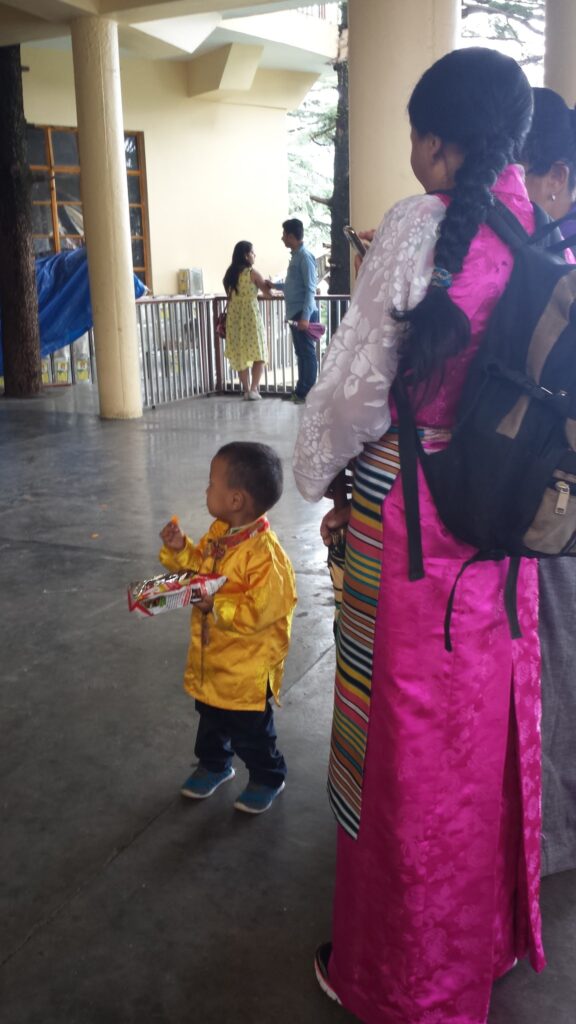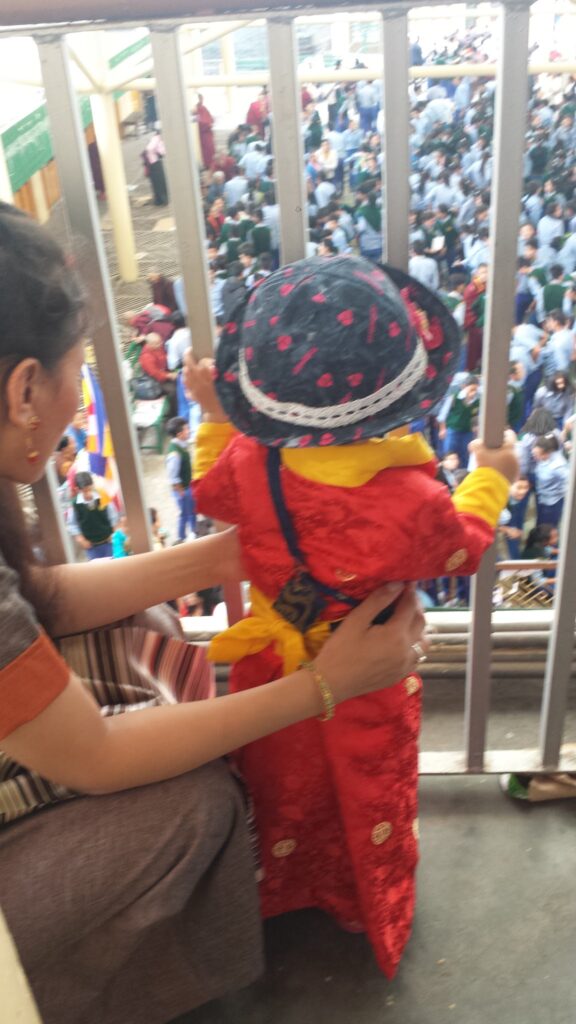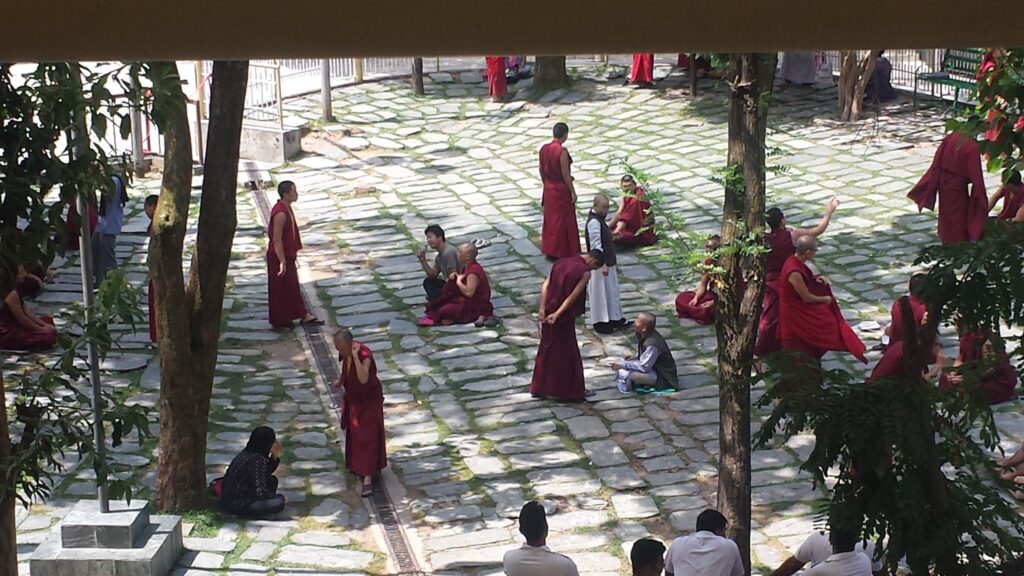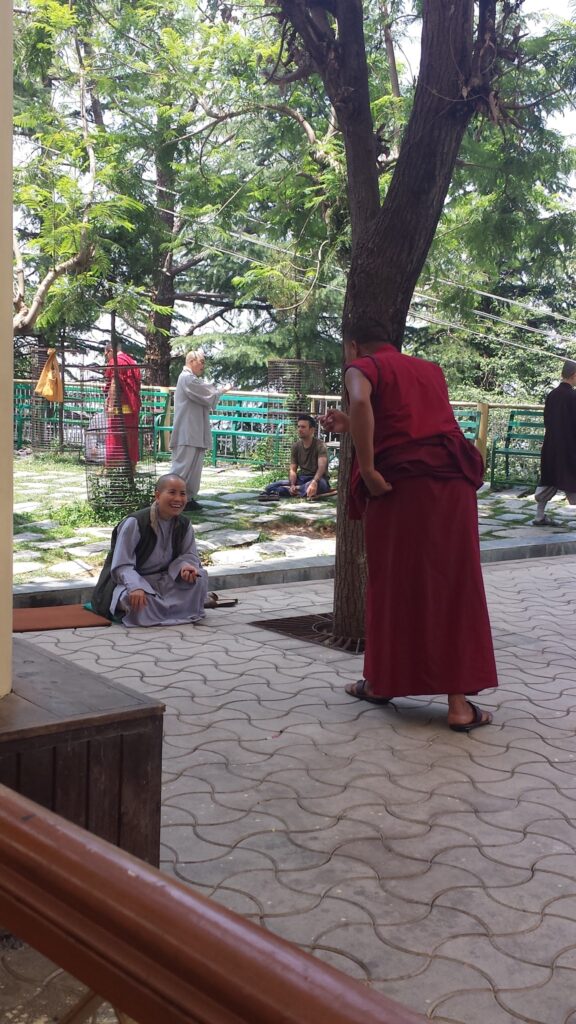
I was fortunate to be in McLeodganj to witness and participate in several special celebrations—including teachings by the Dalai Lama himself. The Dalai Lama’s temple, Tsuglagkang Temple, is a busy hub of activity. Daily there are devotees spinning prayer wheels, chanting, and performing full-body prostrations. Monks debate and foreigners watch. Domestic Indian tourists throng the temple and take selfies with everything and everyone while their children jump up and down on the prostration boards. Admittedly, there can be a carnival atmosphere, but the Temple takes it all in stride, focusing on the Dalai Lama’s example of infinite compassion.
PADMASAMBHAVA DAY JULY 2016
Padmasambhava was a historical teacher who is said to have finally converted Tibet to Buddhism. He was a renowned scholar, meditator, and magician, and his mantra suggests his rich and diverse nature.
http://www.wildmind.org/mantras/figures/padmasambhava



DALAI LAMA’S BIRTHDAY
The Dalai Lama turned 81 on July 6, and it was celebrated with the entire settlement in McLeodganj plus refugees, devotees, and dignitaries from all over India. There were dances, performances, music, and pujas. The Dalai Lama was not in attendance, but it didn’t minimize the scale or turn out. Unfortunately, I did not get good photos of the performances due to the crowd, but got photos of the locals celebrating.



TIBETAN DEBATE
Living in McLeodganj for three months, I understood Tibetans are not quiet. Regularly there was the “boom-boom-boom” of a drum being used in someone’s puja. Or the sound of monks chanting at dawn, accompanied with a conch being blown. Additionally, having had groups of monks in my conversation classes, I knew them to be extremely bright, extroverted, quick thinkers, and followers of Korean drama. I nearly bust-a-gut when one monk imitated what Korean drama sounds like (he does not speak Korean). I have to say, he was spot on.
It may be that their extroverted-quick-thinking nature comes from their tradition. Every day in the main temple there are debates taking place in the courtyard. Monks, nuns, lay people, Tibetan, Korean, Chinese, Western—all converge to participate in Tibetan debate.
The central purposes of Tibetan monastic debate are to defeat misconceptions, to establish a defensible view, and to clear away objections to that view. The right hand represents method, meaning especially the practice of compassion, and the left hand represents wisdom. Bringing the two hands together represents the joining of wisdom and method. At the moment of the clap, you hear the left foot stomp down and that represents slamming shut the door to rebirth in the lower levels.
http://asiasociety.org/tibetan-buddhist-debate.
Honestly, with all the shouting, clapping, and stomping, if I didn’t know better, I would’ve thought there were some serious domestic problems in the sangha. However, understanding its purpose, it actually is quite theatrical and entertaining. Some monks stomp with great flair and expressive faces.


When the clock strikes noon, all debates end and everyone goes to lunch, leaving the temple strangely quiet.
Leave a Reply